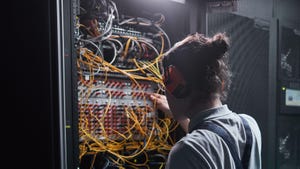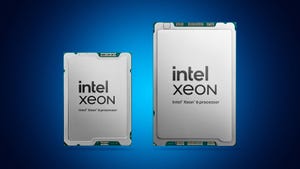Microsoft Tips Its Quantum Hand With Majorana 1Microsoft Tips Its Quantum Hand With Majorana 1
Forrester’s Brian Hopkins takes a deep dive into Microsoft’s Majorana 1 chip and its bold bet on quantum computing.

Quantum computing has long promised revolutionary breakthroughs, but progress has been slow. Recently, Google announced its latest superconducting chip, Willow. Now, Microsoft has unveiled the Majorana 1 chip, its answer to building scalable, fault-tolerant quantum computers.
To back up its claims, Microsoft published a paper in the scientific journal Nature. We see these announcements as steps in the long road to quantum advantage – the point at which a quantum computer becomes commercially practical. As I pointed out in my blog on Willow, most demonstrations so far are experiments using hypothetical problems. Microsoft claims that its approach will enable an accelerated path to a million-qubit machine, more than enough to solve real problems. Yet today, it has only demonstrated eight qubits.
Given that IBM and Google have pursued superconducting qubits for decades and are now at hundreds of qubits, does Microsoft’s alternative strategy have the potential to leap ahead, or will it encounter the same scalability hurdles?
Microsoft’s Qubit Approach Is a Big Gamble
Quantum computing’s biggest challenges are error correction and scalability. Microsoft’s new chip is built on topological qubits, leveraging exotic Majorana particles for inherent stability. The physical properties of topological qubits are less prone to noise than superconducting qubits.
If successful, this design could cut down the overhead needed for error correction – one of the biggest barriers to practical quantum computing. As for scalability, Microsoft’s digital control approach may allow it to fabricate quantum chips with thousands of qubits on a single substrate.
Microsoft has spent a decade developing the theory and engineering that the new superconducting material needed. Competitors have long been skeptical of Microsoft’s ambitions, taking a “Good luck with that” position. To this, Microsoft counters, “superconducting vendors have been at it for 30 years; look what we have done in 10!”
While we think that this recent announcement is a significant step, it is not yet a full proof point that Microsoft is right. But it’s a significant step – Microsoft now has a chip and some evidence that it works as expected. Historically, we have seen early pioneers pave the way for competitors that rethink technology and run away with the competition. In fact, Watson pioneered natural language interfaces, only to be upstaged by Google DeepMind, OpenAI, and others. Are we seeing this happen again? Maybe.
IBM and Google refine existing architectures, while Microsoft bets on unproven scalability. IBM’s Heron and Google’s Willow chips improve qubit fidelity and seek to reduce errors within established superconducting architectures. Microsoft, in contrast, is pursuing a ground-up rethink of quantum computing that could encounter unforeseen bottlenecks. There are still many unknowns. Significantly, Microsoft’s Nature paper admits that it has yet to prove the existence of the particles used to construct its qubits.
Microsoft’s Azure integration may accelerate software readiness but limit ecosystem flexibility. Without software and algorithms, quantum chips are useless to most. IBM has built robust programming models and cloud-based quantum access with a strong partner network and open source Qiskit. Microsoft’s approach embeds quantum computing into Azure, streamlining development but creating a walled garden that may limit middleware partners buying in, slowing uptake.
What This Means for Tech Leaders
Microsoft’s Majorana 1 chip represents a bold bet on a high-risk, high-reward approach. While the potential is significant, real-world applicability is still years away. The goal is reaching scalable, fault-tolerant quantum computers that can solve hard problems exponentially faster than classical computers.
Most experts agree that this is still at least a decade away; Microsoft aims to cut that timeline in half. This announcement is Microsoft putting its game on the line because it’s now convinced that this approach will work. This means tech leaders should:
Plan for post-quantum security. Regardless of which architecture wins, organizations should prepare for quantum computing’s impact on encryption and cybersecurity. If Microsoft accelerates progress, the Y2Q (years to quantum) timeline will shrink significantly.
Monitor progress carefully. Microsoft’s success depends on demonstrating stable qubit operations at scale. Keep an eye on its next milestones. Having experts who understand the details of quantum progress will be essential.
Diversify quantum investments as necessary. Given uncertainty, firms with promising use cases for quantum solutions should engage with multiple qubit providers and platforms, including IBM, Google, Microsoft, and AWS, to avoid betting on a single technology and ecosystem.
Final Take: It’s Still Too Early to Call
If Microsoft’s approach succeeds, it could accelerate the field significantly – but if it encounters the same scaling barriers, it may need to slow down considerably, giving competitors time to solve their superconducting challenges. All the while, there are other approaches such as ion traps, silicon spin, and neutral atoms all racing to demonstrate value.
Will Microsoft’s topological qubit strategy break through, or will it face the same bottlenecks as its competitors at some point and slow down? It’s an interesting time to watch the race that is still too early to call.
About the Authors
You May Also Like









